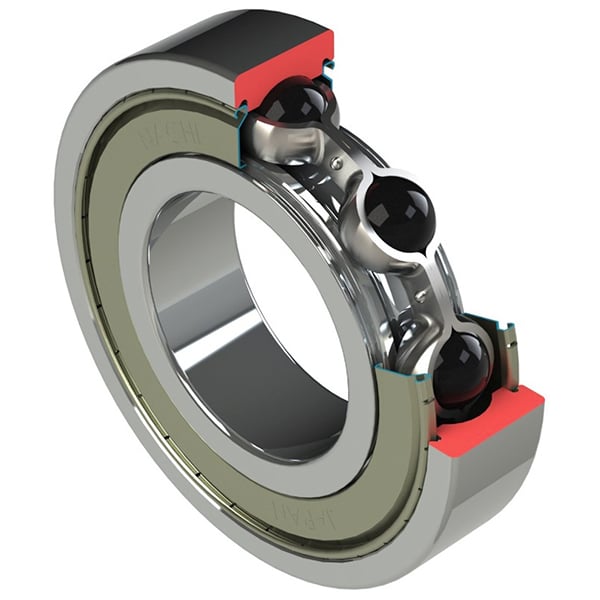When it comes to mobility scooters, wheel bearings are a small but vital component that ensures safety, comfort, and dependable performance. By reducing friction and allowing wheels to rotate smoothly, bearings support stable movement and a comfortable ride. Choosing the right mobility bearings and maintaining them properly can make a significant difference in the long-term reliability of scooters. In this blog, we’ll cover the most common types of bearings used in mobility scooters, essential maintenance practices, and key selection criteria.
Emerson Bearing Blog
Modern warehouses integrate many different kinds of technology, including automation and robotics, that revolutionize how goods are stored, sorted, retrieved, and transported. These changes are possible thanks to precision equipment and components and innovative engineering.
At Emerson Bearing Company, we have over 50 years of experience creating high-quality ball bearings and roller bearings for commercial and industrial applications. Through both Emerson Bearing and Action Bearing, we're proud to serve markets around the world. Emerson Bearing services niche international markets, while our New England customers are served by Action Bearing, which specializes in Original Equipment Manufacturer (OEM) and Maintenance, Repair, and Operations (MRO) solutions.
Ambient temperature is extremely important when choosing a bearing. Whether due to friction, electrical current, electromagnetic induction, or extreme external conditions, bearings are often required to perform in high-temperature environments while maintaining dimensional stability. Emerson Bearing is providing this quick article to help you understand the essence of what it takes for your bearing to take the heat.
Topics: bearings
Clearance, preloading, and fit are common engineering concepts that also apply to the rolling bearing, for which they have crucial importance. At Emerson Bearing, we want to make sure that your bearing selection is perfect for your design. In this post, we will discuss clearance fits and preloads.
Bearings play a critical role in many industrial devices and equipment. While bearing failure is unavoidable, it is possible to minimize the negative impact of failure on company operations. The key is understanding what causes a bearing to fail and how to prevent it from causing premature failure.
While the bearing manufacturing industry might seem straightforward, there are many complexities to navigate. Bearing production requires access to quality raw materials and reliable supply chain networks. Factors like demand fluctuations, rising production costs, material shortages, and manufacturing errors can all put a significant strain on this industry. Here, we’ll explore these factors in more detail and explain how we’ve worked to close gaps in the bearing supply chain.
Ball and roller bearing internal clearance is the total distance the inner or outer ring of a bearing can move when the opposite ring is fixed. A certain clearance is needed to allow for adequate movement between rings. Your bearing clearance can improve or hinder overall bearing performance. Over time, it can also affect the lifespan of the bearing.
Bearings provide smooth rolling motion that can help machines function with less wear or friction. The less friction generated, the less energy is lost through heat. However, different machines require different types of bearings, and choosing the right kind will optimize the equipment’s day-to-day operations, long-term maintenance needs, and reliability. Learn more about the key differences between friction vs. anti-friction bearings to select the right type for your needs.
Bearings improve efficiency in linear and rotational movements by reducing friction and supporting loads. The materials used to make bearings impact the applications to which they are best suited and how they perform.
Be the first to know about all things bearings!
Subscribe to our blog to receive the latest company and industry news right in your inbox






%20(1).jpg)
